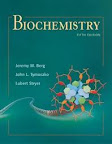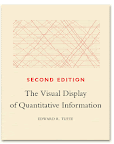When I was revising for my undergraduate exams, I was exasperated by the sheer volume of stuff I needed to know. I was intimidated by the number of facts I would need to have to hand when I wrote my papers.
One supportive friend suggested that instead of stressing cramming I relax a little and try to be a bit more creative. At the time, I exploded with rage at their insensitivity scoffed at the suggestion, as if creativity had any part to play in my attempt to memorise the contents of Stryer.
I was reminded of this exchange when I was alerted to three new publications (“Good Practise Guides”) that have been produced by Imperial College‘s Graduate School. These documents are the result of a project funded by Vitae. The three publications (one for PhD students, one for postdocs and one aimed at supervisors and PIs) discuss what creativity means in the context of research and how to find the balance of creativity within the necessary structure of a research environment. The guides discuss how the opportunities for creativity within postgraduate research can seem at first to be limited, as the work is often repetitive and must be meticulous. If a supervisor has clear ideas about the way the research should be conducted, the student might feel restricted and that his or her autonomy is limited (at the same time as being grateful for the clear direction).
Within my postgraduate work I am fortunate to be given a fair amount of scope to be creative. Whilst I have clear direction on what is to be done, I am given the freedom to experiment with different approaches and ideas. Most of my work is computer-based and I find coding to be something of a creative process, although it is important not to get too carried away.
A PhD student can find other outlets for their creativity, too. Blogging (or getting involved in other science communication projects) is one obvious example. I found running the Science Blogging Workshop here at Imperial gave me the chance to think about teaching (itself a creative process and something many postgraduates do).
The presentation of results provides some scope for creativity. The book The Visual Display of Quantitative Information by Edward Tufte is the classic reference, and XKCD recently published an engrossing example.
The conclusions of the Grad School’s leaflets (maintain good communications with your supervisor, and seek out opportunities for creativity that fit in with your research work) may seem self-evident. However, for a scientist in the midst of the nitty-gritty of experimental work and data analysis, these opportunities can be difficult to see and it is refreshing to be reminded of their existence.


